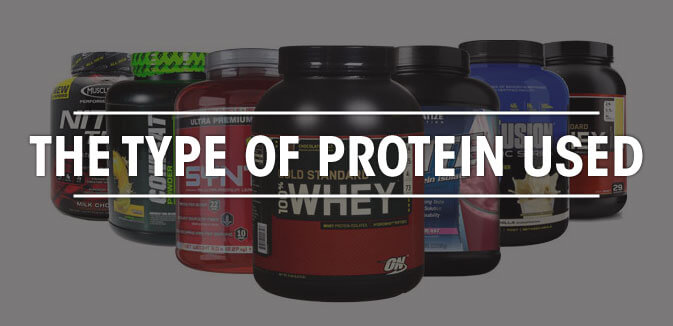Protein Powder 101
By Kate Horney
Choosing a protein powder can be overwhelming if you don’t know what to look for or where to start!
Despite the wide variety of protein powders available, the differences boil down to a few characteristics:
- The type of protein used
- The types of flavors and sweeteners used
- Additional ingredients used to enhance the product’s benefits
THE TYPE OF PROTEIN USED
The types of protein used in protein powders can be divided into two categories: animal source proteins and vegetable source proteins. Animal source proteins include milk protein derivatives like whey and casein, goat’s milk and egg white protein. Vegetable source proteins include soy, rice, pea and hemp proteins.
Whey Protein
Whey protein is derived from milk. The protein portion of whole milk consists of 20% whey protein and 80% casein protein. Whey is by far the most popular type of protein used in protein powders. For most people, it’s the best all-around choice in terms of taste (it’s one of the best-tasting), quality (it’s the highest) and cost (it’s the most economical). Another unique benefit of whey protein, and one that is often overlooked, is that it enhances the immune system in several ways.
Whey protein comes in two varieties, whey concentrate and whey isolate. The advantages of each are:
Whey Concentrate: Whey concentrate is more economical per gram of protein. It has a low lactose level that is well tolerated by most lactose-sensitive people. It has trivial amounts of fat and carbs relative to your overall nutrient intake. Whey concentrate is typically the best-selling category of whey.
Whey Isolate: Whey isolate is virtually fat-free for those wishing to eliminate as much fat from their diet as possible. It is typically lactose free for those few individuals who are very sensitive to the low-lactose levels found in whey concentrate. Whey isolate tends to taste slightly better than whey concentrate too, yet its consistency is a little thinner, without the fat.
Egg White Protein
Egg white protein was the most popular type of protein supplement for many years before milk proteins surpassed its popularity due to their better taste and lower cost.
Like milk proteins, egg white is also naturally very low in fat and carbs.
Egg white protein is cholesterol-free and an excellent choice for those who wish to avoid dairy products.
Casein or Milk Protein
Like whey protein, casein protein is another milk protein derivative. Since most of the protein (80%) in milk is casein, the terms “milk protein” and “casein protein” are used interchangeably. The key difference between whey and casein is that whey is absorbed in the digestive system quickly, whereas casein is absorbed slowly and steadily. Taste-wise they are similar. Both are more or less tasteless in their unflavored and unsweetened state.
Vegetable Proteins
Among the vegetable source proteins, soy protein is by far the most popular, but is actually something that should be avoided if fat loss is the goal. Soybeans contain phytoestrogens, which mimic the body’s natural estrogen hormones. This can cause estrogen dominance, which has been linked to infertility, menstrual troubles and even cancer. These phytoestrogens are so strong that a baby consuming only soy formula is consuming the equivalent hormones of 4 birth control pills a day! In addition, the high levels of phytic acid in soy inhibit the body’s ability to absorb important minerals, including zinc, calcium, copper, iron and magnesium.
Soy also contains protease inhibitors, which can block the enzymes that are necessary for the digestion of certain proteins, so if you’re looking for a vegetable based protein powder, opt for hemp, pea or rice powder.
Hemp Protein
Derived from the hemp seed, this protein-rich plant source offers a complete amino acid profile, plus it’s highly digestible—meaning it’s a smart pre-gym supplement that won’t cause stomach issues during your workout. But hemp’s fat and calorie content can be on the high side, so if your goal is to cut, you might want to opt for whey or casein powder.
Brown rice protein
Many vegans rely on this allergen-free, gentle, and high quality protein powder for their workout and recovery smoothies.
Types of Flavors and Sweeteners Used
Manufacturers have hundreds of options to choose from when flavoring and sweetening their protein powder products.
Your flavoring choices fall into 3 categories:
- No flavors or sweeteners;
- Artificial or a combination of artificial and natural flavors and sweeteners
- Only natural flavors and sweeteners.
What you decide to use is up to you. At BeyondFit, we love naturally sweetened protein powders like those using Stevia, etc. The flavors and sweeteners have no impact whatsoever on the nutritional value of the protein; they only affect the taste.
Additional Ingredients
Besides protein, flavors and sweeteners, many manufacturers add other ingredients to enhance the product’s nutritional value or taste, or to make it easier to use.
Some protein powders are enhanced with digestive enzymes to help improve the absorption of large servings of protein. Added lactase and Aminogen digestive enzymes in
Other protein powders may be enhanced by adding amino acids to improve its nutritional value. Although whey protein contains all the necessary amino acids, it doesn’t provide them in equal amounts. By adding amino acids like glutamine, BCAAs and arginine, the nutritional benefits of that protein are extended and enhanced
Additional types of enhancements include the addition of carbohydrates and nutritional fats to the protein and/or the addition of vitamins and minerals.
Make sure to read labels before you choose the best protein powder for you!
Find out what the top three BEST supplements for women are here!


